Lily Salter's Blog, page 258
October 27, 2017
Will sex assault allegations finally erase the journalistic blight of Mark Halperin?
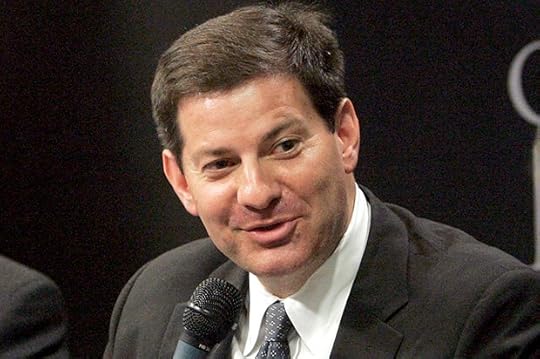
Mark Halperin (Credit: AP/Sue Ogrocki)
Political reporter and author Mark Halperin is the latest man in media to be revealed as a lout. After CNN reported that five separate women had accused him of various acts of sexual harassment — including allegedly pressing his erect penis against one of them — Halperin’s many employers have been frantically distancing themselves from him. Even so, the oleaginous and oft-wrong pundit’s many years of flattering higher-ups means we may not be rid of his presence.
NBC News, Halperin’s primary employer, announced that he was “leaving his role as a contributor” shortly after the news broke. “We find the story and the allegations very troubling,” the network said in a Thursday statement within hours of the CNN report. HBO, which had paid Halperin for film rights for his books on the 2008 and 2016 elections, also announced that it was terminating its relationship with him.
Halperin admitted to sexually harassing co-workers during his time as an executive at ABC News in a statement of his own.
“During this period, I did pursue relationships with women that I worked with, including some junior to me. I now understand from these accounts that my behavior was inappropriate and caused others pain,” Halperin said. “For that, I am deeply sorry and I apologize. Under the circumstances, I’m going to take a step back from my day-to-day work while I properly deal with this situation.”
After the initial news broke, several other women came forward to accuse Halperin of harassment.
In a separate essay for CNN, producer Eleanor McManus wrote that being sexually assaulted by Halperin almost made her not want to pursue a career in journalism.
“I didn’t want to offend the man in charge of political programming at ABC News, and I tried to be courteous and apologetic, and practically ran out of the office. I was upset not by his actions, but the thought that I did something wrong to encourage that behavior. Was my suit too revealing? Did I lead him on? Was this what I had to expect if I went into broadcast news or journalism? If so, I didn’t want any part of it.”
News executive Lara Setrakian, whose initial statement to CNN broke the dam on the allegations, wrote in a Washington Post op-ed on Friday that the fact that Halperin was allowed to get away with his behavior is indicative of “how fearful our culture remains”:
I felt like an idiot walking out of Halperin’s ABC News office in November 2006. He was running our midterm election coverage; I was assigned to it as a junior reporter, one year into my job. He praised my professional work and invited me to his office to talk politics over a Diet Coke. When I got there, he kissed me and touched me inappropriately. I left that room shaken. I told some trusted colleagues but didn’t directly file a complaint. I was worried about the consequences of speaking out — just as many of my colleagues still are today.
While it’s looking like thus far that Harvey Weinstein’s career in a long-delayed comeuppance, Halperin is still getting public sympathy, despite his serial predations on women.
On Thursday and Friday, MSNBC “Morning Joe” co-host Mika Brzezinski has repeatedly referred to Halperin as “our friend.” That’s not exactly a surprise considering that he’s spent the better part of the show’s existence trying fervently to suck up to Brzezinski and her husband Joe Scarborough despite his long record of abusing people who couldn’t help his career.
Perhaps that is why Brzezinski received a special shout-out in Setrakian’s op-ed:
MSNBC’s Mika Brzezinski taught me an important lesson in her book “All Things at Once.” She said we can’t let our jobs become a “bad boyfriend,” something that takes the best of us, abuses us and doesn’t give us due credit for what we contribute. The news industry, riddled with abusive habits that we have normalized and internalized, risks becoming that “bad boyfriend.” We need to break these habits — for the future of our profession and for one another.
On Friday, former MSNBC anchor Keith Olbermann accused his one-time colleague Joe Scarborough of having “covered up” Halperin’s behavior.
“I never even met Halperin and even I knew the guy brought the rep of Sleazebag with him from ABC,” Olbermann wrote on Twitter. “@joenbc didn’t? LOL.”
Showtime, yet another media company which has been inexplicably interested in associating itself with Halperin’s brand of sucking up to Donald Trump, reciting conventional wisdom, and making bad predictions has not yet ended its relationship with him.
“During Mark’s time working with us, we have not seen nor have there been allegations of any untoward behavior,” the premium tv network said in a tepid statement. “We are aware of these reports and will continue to evaluate all options should we decide to move forward with another season of The Circus. There is no tolerance for sexual harassment within Showtime and its productions.”
Halperin’s publisher, Penguin Press, took a much better approach in a news release announcing it had canceled its plans to publish yet another presidential election tome.
“In light of the recent news regarding Mark Halperin, the Penguin Press has decided to cancel our plans to publish a book he was co-authoring on the 2016 election,” the company said in a statement.
Halperin’s poor quality journalism ought to have been reason enough to get him banned from television. It’s a shame that it took the revelation that he is a serial sexual predator to remove him from the media scene.
Knowing Halperin, however, he’s already plotting a comeback. In fact, he’s already mocked the idea of how anyone can come back from a sex scandal:
FLASHBACK: On Showtime's The Circus, Mark Halperin lays out what "everybody knows" re: how to recover from sex misconduct scandal pic.twitter.com/A0YHXu6dqp
— Rich Noyes (@RichNoyes) October 26, 2017
Eccentric Montana couple run as opponents in separate US Senate campaigns
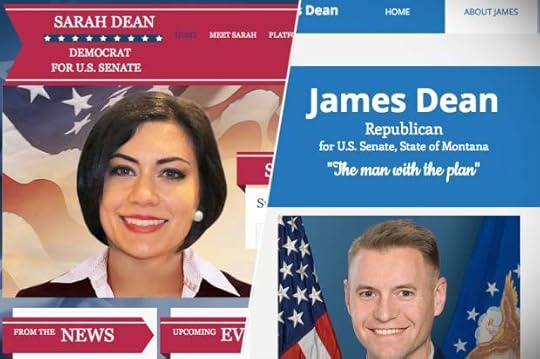
Sarah Dean and James Dean's campaign websites. (Credit: Salon / jamesdeanforsenate.com / sarahdeanforsenate.com)
Sure, all couples have their issues. Yet running against each other in a U.S. Senate race seems like a particularly big one.
William James Dean (who goes by James) and Sarah Dean, a couple from Montana, are running for the same U.S. Senate seat. James is running as a Republican. Sarah is running as a Democrat. But that’s the least of their problems.
Besides running to unseat second-term Senator Jon Tester, their campaign narrative is full of holes. There are aliases, assorted business ventures, fringe economic theories, and a shared tendency to give indirect responses to basic questions about family or their relationship. Here are some of the most unusual things coming out of their recent interview in a Montana outlet, the Billings Gazette, where they sound like Mr. and Mrs. Smith.
There are aliases involved, because of course there are
Meet Republican Senate candidate William James Dean. Or wait, is that Daniel Lane Dean? Daniel Lane Dean is an Air Force Academy graduate who took the Hawaii state bar exam, and who received divorce papers while while working for the Judge Advocate General Corps at Guantanamo Bay. Oh, and he also tried to run for president in California.
Shortly thereafter, he changed his name for what he said were “religious reasons.”
His wife, Sarah, tells it differently. She takes credit for the change.
“I just didn’t like it, I didn’t like his name because they called him Dan and I just didn’t see him as a Dan,” Sarah told the Gazette. “And he thought that it was because I prayed about it and I got an answer, but no, I honestly wanted him to be a William. And I told him, you have to be a William. I didn’t like his name and all these complications that went with me thinking of him being a Dan and I’m just like, ‘I’m over this.’”
Sarah Dean is running as a Democrat against a Democratic senator. Priscilla Dawn is a dressmaker who sells her products online and has “a passion for fashion and tea parties.” Priscilla Dawn Baer is a children’s book author and illustrator. Pastor Victoria Dawn fights to save “widows in India” and makes wedding gowns that you can buy at her website BrideOfChrist.com. Plot twist: all of the above four people are aliases of Sarah Dean.
They can’t tell you when they were married
With most married couples, forgetting an anniversary can lead to some drama. Not so with the Deans. In fact, no one really knows when these zany kids eloped. The Billings Gazette reported asked when they were married. Their response:
“Let’s hold that one for a bit,” James said.
Sarah: “We were together for a long time before we did but … .”
James: “So, uh.”
Sarah: “We are married. (laughs). We are married. We do have our wedding rings on.”
James: “Um, we had to. It was not with her father’s consent. We had to elope.”
Trumpian promise of a new financial system
The couple also claims, with Trump-esque bombast, that they are the only people who can save the country if they are elected.
“I’m the only candidate in the country who has any chance of getting their agenda actually implemented in the United States. That’s it. I’m the only person,” James said. “There’s nobody in the United States to solve the problems we have facing the country.”
They intend to do this by implementing a new financial system.
“Debt itself creates inflation, and debt itself creates asset bubbles. Any solution to financial crisis has to go directly to the root of the problem,” James Dean told the Gazette. “Which is the debt. And you can’t regulate debt. You have to make it different. So we’re not just criticizing bankers, we have an entirely new financial system.”
They’re largely unknown
This economic genius couple that touts a one-time presidential hopeful in their ranks also say they’re political newcomers. The locals in their small college town of 10,000 people seemed not to know who they were.
“When we heard that a husband and wife were challenging Tester on opposing sides, I think everyone was surprised and almost wondered if it was a joke, to be honest,” Jacob Bachmeier, a Democratic state senator from their local Hill County, told the Gazette. “Not a lot of people in Hill County really know them,” he added.
What is the real Sarah Dean backstory?
In her campaign bio, Sarah says she’s a native of Chicago whose family moved to Havre, Montana in 1999 for a “Little House on the Prairie” life. In this narrative she also started a business at 15 (though details are scant on that) and later started making dresses from curtains in her house.
In the in-person interview with the Gazette, Sarah Dean said her father was a famous record producer whom she wouldn’t name, and that he moved the family to Havre to start a child labor camp with his 8 children, which Dean escaped when she was 25.
So what was the business she started at 15 when she was stuck in a “child labor camp?”
Sarah Dean also wanted to “feed the widows” of India
On a GoFundMe page titled “Going to India to Feed the Widows,” San Francisco–based women’s ministry pastor Victoria Dawn (see above re: aliases) raised $155. The campaign is now closed and says it met its goal, although the Billings Gazette says the original goal was $3,500. There isn’t any info on the defunct page explaining the details of the “widows” or the region of India where the money was being directed. However, $135 of that was donated by Priscilla Dawn, presumably the dressmaker, praising Pastor Victoria Dawn for her humanitarian work.
The Church of the Bridge
This one is a bit complicated, so bear with us: On the website of Sarah Dean — a.k.a. Pastor Victoria Dawn — customers can pay $244 for, among other things, prophetic messages and prayer, a jeweled crown, and a presentation of the customer’s business to funders at something called The Bridge Institution.
What’s The Bridge Institution, and why would someone want their business presented to its funders? Well, the website for The Bridge Institution says it is a “basic and applied science research institute whose purpose is to design organizations that will in turn implement new social frameworks for humanity.”
It is unclear what “funders” The Bridge Institution has, nor is it clear why one would want their business presented to them. If you peruse their website, you’ll find some interesting and seemingly contradictory explanations of what they are — it reads a bit like a blueprint for starting a new civilization, a mix of techno-utopianism and New Age pseudoscience:
HEART CHANGE PROCESS
The Bridge Institution will intensively study the deep nature of the human subconscious, emotions, moral character, mental health, spiritual essences, motivation, and personality, and determine how they are integrated and relate to other major aspects of the human condition.
AGRICULTURE
Bridge Institution’s agricultural system will enable small plots of land to rival large agribusiness farms in agricultural productivity. Bridge Institution’s agriculture system has three components: a system of data and electronically encoded processes, a financial and contractual system that encourages cooperation, and a portfolio of agriculture-specific innovations. These components enable an agricultural system such that hundreds of people will provide specialized services for each small plot of land. One person may maintain all orange trees on 1000 plots. Another may maintain all micro-irrigation systems. The land owner becomes an integrator who collects data that signals when maintenance, harvesting, weeding, and other tasks are required.
The Bridge Institution website also links to The Church of the Bridge, which in turn lists both William James and Sarah Dean as “coaches in divine destiny and aligning your life, business, or job to God’s plan for your life.”
The contact number for The Bridge Institution also happens to be same number James Dean gives the FEC in his campaign filings.
So who are the Deans? Are they the political power couple that will finally save the United States? Or are they just two hucksters who watched too much “House of Cards”?
Sexual victimization by women is more common than known
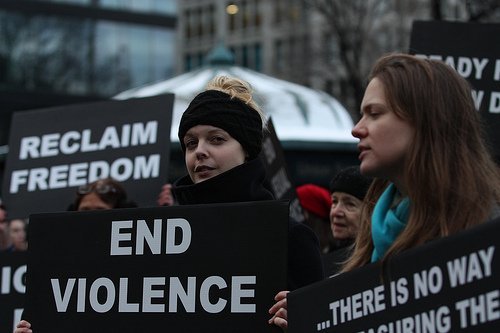
(Credit: Heather Martino via Flickr Creative Commons)
Take a moment and picture an image of a rapist. Without a doubt, you are thinking about a man. Given our pervasive cultural understanding that perpetrators of sexual violence are nearly always men, this makes sense. But this assumption belies the reality, revealed in our study of large-scale federal agency surveys, that women are also often perpetrators of sexual victimization.
In 2014, we published a study on the sexual victimization of men, finding that men were much more likely to be victims of sexual abuse than was thought. To understand who was committing the abuse, we next analyzed four surveys conducted by the Bureau of Justice Statistics (BJS) and the Centers for Disease Control and Prevention (CDC) to glean an overall picture of how frequently women were committing sexual victimization.
The results were surprising. For example, the CDC’s nationally representative data revealed that over one year, men and women were equally likely to experience nonconsensual sex, and most male victims reported female perpetrators. Over their lifetime, 79 percent of men who were “made to penetrate” someone else (a form of rape, in the view of most researchers) reported female perpetrators. Likewise, most men who experienced sexual coercion and unwanted sexual contact had female perpetrators.
We also pooled four years of the National Crime Victimization Survey(NCVS) data and found that 35 percent of male victims who experienced rape or sexual assault reported at least one female perpetrator. Among those who were raped or sexually assaulted by a woman, 58 percent of male victims and 41 percent of female victims reported that the incident involved a violent attack, meaning the female perpetrator hit, knocked down or otherwise attacked the victim, many of whom reported injuries.
And, because we had previously shown that nearly one million incidents of sexual victimization happen in our nation’s prisons and jails each year, we knew that no analysis of sexual victimization in the U.S. would be complete without a look at sexual abuse happening behind bars. We found that, contrary to assumptions, the biggest threat to women serving time does not come from male corrections staff. Instead, female victims are more than three times as likely to experience sexual abuse by other women inmates than by male staff.
Also surprisingly, women inmates are more likely to be abused by other inmates than are male inmates, disrupting the long held view that sexual violence in prison is mainly about men assaulting men. In juvenile corrections facilities, female staff are also a much more significant threat than male staff; more than nine in ten juveniles who reported staff sexual victimization were abused by a woman.
Our findings might be critically viewed as an effort to upend a women’s rights agenda that focuses on the sexual threat posed by men. To the contrary, we argue that male-perpetrated sexual victimization remains a chronic problem, from the schoolyard to the White House. In fact, 96 percent of women who report rape or sexual assault in the NCVS were abused by men. In presenting our findings, we argue that a comprehensive look at sexual victimization, which includes male perpetration and adds female perpetration, is consistent with feminist principles in important ways.
For example, the common one-dimensional portrayal of women as harmless victims reinforces outdated gender stereotypes. This keeps us from seeing women as complex human beings, able to wield power, even in misguided or violent ways. And, the assumption that men are always perpetrators and never victims reinforces unhealthy ideas about men and their supposed invincibility. These hyper-masculine ideals can reinforce aggressive male attitudes and, at the same time, callously stereotype male victims of sexual abuse as “failed men.”
Other gender stereotypes prevent effective responses, such as the trope that men are sexually insatiable. Aware of the popular misconception that, for men, all sex is welcome, male victims often feel too embarrassed to report sexual victimization. If they do report it, they are frequently met with a response that assumes no real harm was done.
Women abused by other women are also an overlooked group; these victims discover that most services are designed for women victimized by men. Behind bars, we found that sexual minorities were 2-3 times more likely to be sexually victimized by staff members than straight inmates. This is particularly alarming as our related research found that sexual minorities, especially lesbian and bisexual women, are much more likely to be incarcerated to begin with.
In addition to the risk faced by sexual minorities, the U.S. disproportionately incarcerates people who are Black, Latino/a, low-income, or mentally ill, putting these populations at risk of abuse. Detained juveniles experience particularly high rates of sexual victimization, and young people outside of the system are also at risk. A recent study of youth found, strikingly, that females comprise 48 percent of those who self-reported committing rape or attempted rape at age 18-19.
Professionals in mental health, social work, public health, and criminal justice often downplay female perpetration. But in fact, victims of female-perpetrated sexual violence suffer emotional and psychological harm, just like victims of male-perpetrated abuse. And when professionals fail to take victimization by women seriously, this only compounds victims’ suffering by minimizing the harm they experience.
Researchers also find that female perpetrators have often been previously sexually victimized themselves. Women who commit sexual victimization are more likely to have an extensive history of sexual abuse, with more perpetrators and at earlier ages than those who commit other crimes. Some women commit sexual victimization alongside abusive male co-perpetrators. These patterns of gender-based violence must be understood in order to reach the troubled women who harm others.
To thoroughly dismantle sexual victimization, we must grapple with its many complexities, which requires attention to all victims and perpetrators, regardless of their sex. This inclusive framing need not and should not come at the expense of gender sensitive approaches, which take into account the ways in which gender norms influence women and men in different or disproportionate ways.
Male-perpetrated sexual victimization finally came to public attention after centuries of denial and indifference, thanks to women’s rights advocates and the anti-rape movement. Attention to sexual victimization perpetrated by women should be understood as a necessary next step in continuing and expanding upon this important legacy.
Chris Wallace has a problem with Fox colleagues attacking the press
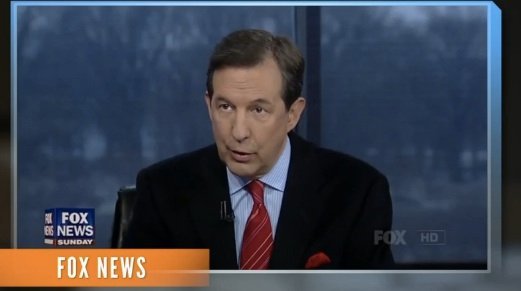
(Credit: Fox News)
On a cold November morning in 2010, Fox & Friends co-hosts Steve Doocy, Brian Kilmeade, and Gretchen Carlson have moved their set outside the network’s Manhattan headquarters. The trio are huddled in their winter coats on a fur-draped bench that appears to be made of ice, sitting around an open fire, talking to a bemused Chris Wallace, who is remote from Fox’s Washington, DC, studio. Then Doocy grabs a container of marshmallows from a producer and begins try to roast them over the fire with his bare hands. As Wallace asks with a smirk if Doocy might be making a mistake, Kilmeade, armed with a plastic spoon, joins the effort.The pair continue their antics while a clearly exasperated Carlson tries to get the segment back on track, asking, “Chris, can I talk a little politics with you?” Wallace ignores her, clearly mesmerized by the footage of her co-hosts, before commenting, “I’m watching this and I’m thinking, well, I’m thinking what all of your viewers are thinking.” “Which is?” Kilmeade asks, while Doocy roasts the marshmallows with a stick. “What a bunch of dopes,” Wallace responds with a laugh.
Those were better days for Wallace’s relationship with his network’s outwardly conservative morning and prime-time hosts. With President Donald Trump’s election in November, the latter are ascendant. Trump watches their programs, calls them up for advice, praises them publicly, and gives them exclusive interviews; they provide sycophantic coverage that caters to their biggest fan. Wallace is reportedly displeased, particularly with the way his colleagues have joined the president’s attacks on the news media.
“I don’t like them bashing the media, because oftentimes what they’re bashing is stuff that we on the news side are doing,” he told The Associated Press in an interview published yesterday. “I don’t think they recognize that they have a role at Fox News and we have a role at Fox News. I don’t know what’s in their head. I just think it’s bad form.”
Wallace won’t name the colleagues he believes are crossing the line, but Sean Hannity is a good guess. So are the co-hosts of Fox & Friends, on whose show the AP says Wallace no longer appears.
Wallace’s comments seem well-intentioned. But they demonstrate a fundamental lack of understanding of the business model of the network he’s worked at for more than a decade — and the way he’s benefited from his conservative colleagues’ attacks on the press.
Fox News was founded as a countervailing force to the rest of the press. Conservatives have attacked the press for decades, but what founder Roger Ailes realized was that he could feed that grievance as a way of amassing power. If conservatives could be convinced that other networks could not be trusted, they’d flock to Fox. And the more exclusive viewers he acquired the more support he could provide to the Republican Party.
And so the network’s longtime slogan of “Fair and Balanced” was born. For Ailes, a Republican operative who had worked for or on behalf of Richard Nixon, Ronald Reagan, and George H.W. Bush, “balanced” had a very particular meaning: he imagined the network as balancing the mainstream press, which he considered biased against conservatives. And describing Fox as “fair” signaled that the rest of the press was not.
It worked. Fox became the most popular news network, riding the popularity of the network’s raft of conservative commentators and a steady drumbeat of right-wing news narratives and attacks on the rest of the press to greater heights. Meanwhile, Republican trust in the media plummeted.
Ailes also realized that Fox would be more effective if it wasn’t openly branded as a right-wing outlet. And so Fox executives have long sought to bolster the network’s credibility by saying that Fox is just like a newspaper, split between conservative “editorial” commentary programs like Fox & Friends and Hannity and the network’s objective “news” side, which includes Wallace’s Fox News Sunday and news anchor Shepard Smith.
The “news” side staff provide an “advantage” for the network’s leaders, according to media analyst Andrew Tyndall. “When people criticize Fox, Ailes can point to Shep as someone who is fair and balanced,” he told The Daily Beast in 2009. “The critics might be right 85 percent of the time, but Shep is the other 15 percent.”
Of course, the notion of a strict divide between the two sides has always been a farce. But the stylistic gap between the two creates friction, which at times leads to staffers from the “news” side criticizing the worst excesses of their “editorial” side colleagues, either in interviews with other outlets or on the Fox airwaves.
Wallace’s experience — he spent two decades at ABC and NBC before joining Fox in 2003 — and pedigree — his father was legendary newsman Mike Wallace — makes him perhaps the network’s most credible voice. And his comment to the AP is far from the first time he’s criticized his colleagues. But Wallace certainly understands Ailes’ strategy. “We’re the counterweight” to the rest of the press, he told Jon Stewart in 2011. “They have a liberal agenda, and we tell the other side of the story.” While Wallace is far from the worst offender at Fox, he obviously benefits from the image of the network — and its competitors — that the worst offenders create.
Think of Wallace as the Mitt Romney to Fox & Friends’ Trump. Romney, unlike Trump, seems like a personally decent sort, with real political values and some amount of personal character. But in order to gain the Republican presidential nomination in 2012, Romney was willing to seek out Trump’s support. At the time, Romney probably considered Trump a harmless showman whose endorsement could sew up conservative support, and so he looked past Trump’s championing of conspiracy theories about President Barack Obama’s birth certificate. But four years later, when Trump was no longer just a clown, but on the cusp of clinching the Republican nomination himself, Romney ripped into the businessman as a danger to the country.
Like Romney, Wallace was willing to laugh along with the Fox & Friends gang when he considered them relatively harmless “dopes.” But now that he realizes they’re in an actual position of power, he worries about the damage their ilk may be able to do to U.S. institutions.
California needs to rethink urban fire risk after tragedy
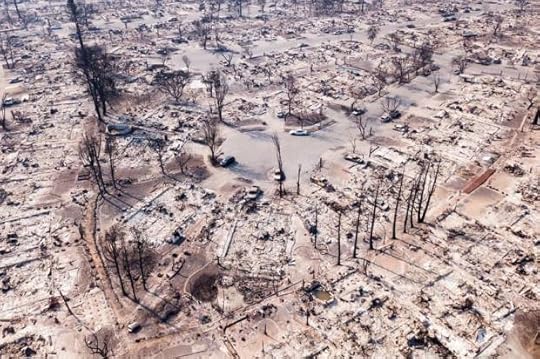
Fire damage in Santa Rosa, California, October 11, 2017. (Credit: Getty/Elijah Nouvelage)
We recently witnessed the wind-driven Tubbs fire blast its way through densely urbanized neighborhoods in Northern California, causing dozens of fatalities and thousands of home losses. This tragic event easily ranks as the most catastrophic fire in modern California history. Stories of how fast the fire spread and how little time people had to evacuate are stunning.
Despite how unusual the devastation appears, we need to recognize that these structure-to-structure “urban conflagrations” have happened in the past and will happen again. Yet these fires revealed that we have key gaps in our policy and planning related to assessing risk in fire-prone environments.
What is increasingly clear to fire researchers like me is that losses on the human side are often driven by where and how we build our communities. This means we must learn to coexist with fire, if we are going to inhabit fire-prone landscapes, just as we adapt to other natural hazards. An essential step is to shift our perspective from a focus on hazard to one that more comprehensively includes human vulnerabilities.
Mapping risk
California is leading the way in mapping the danger that wildfires pose to human communities and, in particular, linking building codes to fire severities that may be expected in given location. The state’s Fire Hazard Severity Zone maps are an essential step in recognizing fire as an inevitable process that must be accommodated, similar to how we plan for floods, landslides, earthquakes and hurricanes.
What is missing from these maps, however, is extreme weather patterns. The Santa Ana winds of Southern California are a notable example. Strong, hot and dry wind episodes are associated with nearly all of our largest and most destructive wildfires, including the 1964 Hanley fire in Northern California that burned an almost identical footprint to the Tubbs fire, yet relatively little is currently known about how often they occur across a landscape.

Updating maps on fire risk should inform urban development.
Cal Fire, CC BY
New methods are becoming available for mapping and modeling winds, and future versions of the Fire Hazard Severity Zone maps will therefore include such weather conditions. Similar maps are also needed for fire-prone areas outside California.
Despite technical advances, a key problem with most mapped approaches to fire danger is that the focus is almost exclusively on characterizing the hazard – flame lengths, rates of spread or fire intensities of an oncoming wildfire – and much less on the vulnerabilities of what is actually exposed. The “wildland-urban interface,” where developed lands are exposed to natural, flammable areas, is thus often mapped and assumed to be where the exposure ends.
Clearly this is not always the case. Analogous to when a levee fails, after a wildfire manages to ignite homes along the wildland-urban interface, many homes farther inside the neighborhood can quickly become exposed.
Depending on the building codes in place during their construction, these newly exposed structures may or may not be very fire-resistant. Their vulnerability to ignition can also be especially high if they are spaced closely together and the winds are strong, because that is when fire spread transitions to a structure-to-structure domino effect.
Better fire risk mapping means we should be able refine our notion and approach to assessing vulnerability.
Reducing human exposure
There are numerous reports of how difficult and deadly it was to evacuate during the Tubbs fire. Apparently many people had almost no warning at all. This highlights the importance of both evacuation planning and evacuation communication systems, as getting out in time is what Americans tend to rely on in wildfire situations.
Although evacuation preparedness is nearly always mentioned in Community Wildfire Protection Plans and standard guidance for home owners, the overriding message is typically to “leave early” whenever possible.
While absolutely correct, this advice minimizes the importance of pre-fire evacuation planning and the short time there may be to get out. It takes quite a bit of thought and effort to anticipate being in such a crisis situation!
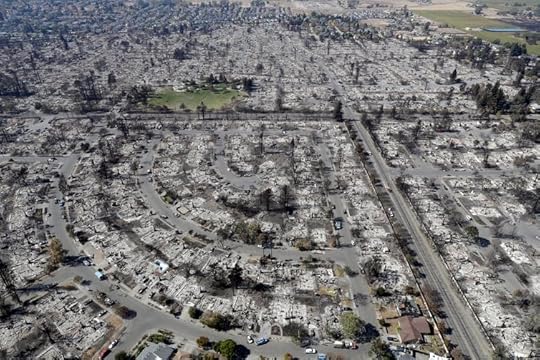
An urban fire that gave many people little time to leave points to the need for better planning on evacuation.
AP Photo/Marcio Jose Sanchez, CC BY
What should one take, and where might one actually go?
On short notice, how does one account for pets, children or the elderly?
Is there a place one should retreat to, if evacuation orders are received too late or not at all?
This last question may be the one that gets the least attention, and the many fatalities in the Tubbs fire suggest that it requires much deeper consideration. Firefighters are often given specific training about what to do with limited evacuation options. For homeowners, however, guidance can be sparse.
When it is too late and too dangerous to evacuate safely, fallback options must be considered and communicated ahead of time. In an urban conflagration situation, local details dictate whether “safety zones” actually exist as places to take refuge. Given the real potential for such disasters, many communities should consider identifying (or building) key “hardened” structures to act as local-scale refuges.
Reducing human exposure involves more attention to what people must do during a wildfire, or even the rare urban conflagration. Safe evacuation deserves as much emphasis as reduction of fuels, such as creating defensible space around homes or larger scale fuel breaks by thinning vegetation around communities.
A safer built environment
From the scale of individual home construction up to the location and arrangement of development on a landscape, our communities should be better able to survive the natural hazards that occur there. This requires both short- and long-term strategies for achieving a safer built environment.
As a starting point, we must acknowledge that we currently have tens of thousands – possibly even hundreds of thousands – of homes constructed according to building codes that leave these structures vulnerable to ignition. Amazingly, however, there are very few examples of grant programs to mitigate such vulnerabilities through retrofit programs to, for instance, replace wood shake shingle roofs or to upgrade attic and crawlspace vents to block embers from entering homes.
In contrast, there are millions of dollars in public funds spent annually on community-scale fuel reduction projects. These are common activities pursued by Fire Safe Councils in California and similar organizations in other states.
The same level of support should be available for mitigation of fire-related structure vulnerabilities as there is for hazards.
Over the long term, land use planning is probably the most effective tool available for creating safer communities. We must be more deliberate about how we develop on fire-prone landscapes, taking advantage of emerging hazard-mapping techniques.
The goal here is not necessarily to build fewer homes, but to design and site developments that avoid the highest hazard regions and concentrate development in the lowest hazard areas. This logic applies, to varying degrees, to constraining development with respect to other natural hazards.
Despite an aversion by some to land use planning, this strategy is simply common sense. It will also save lives and massive amounts of public resources over the long term.
Where we do choose to develop and inhabit hazard-prone environments, it may be necessary to design communities with “passive survivability” in mind, or the ability to withstand the event and have water and power for a few days. This provides both the built environment and the people within some basic protection for a limited time.
 Strategies exist to lower the risk of fire in the current housing stock and to more carefully design and site future development where wildfires are possible. With increasing extremes expected as climate continues to change, officially recognizing this link and creating a safer built environment will only become more urgent.
Strategies exist to lower the risk of fire in the current housing stock and to more carefully design and site future development where wildfires are possible. With increasing extremes expected as climate continues to change, officially recognizing this link and creating a safer built environment will only become more urgent.
Max Moritz, Cooperative Extension Specialist, Wildland Fire, University of California, Berkeley
October 26, 2017
How racism became our zeitgeist

(Credit: Getty/PeopleImages)
“A people thus handicapped ought not to be asked to race with the world, but rather allowed to give all its time and thought to its on social problems,” — W.E.B DuBios
It’s a crisp autumn night, but my best friend and I are cozy at an Oktoberfest party in East Harlem on a Saturday night. For her it’s a college reunion, but for myself it’s just a house party with a bunch of people I’ve yet to meet. The crowd is a mixture of black, white, Asian, gay and straight people. I’m sitting, observing the crowd of plaid wearers, trying to figure out whom I should talk to. I weave my way in and out of conversations following my friend’s lead as she catches up with old college friends.
The party is beginning to wind down conversations are no longer muted by the loud music. Instead, the top 40 playlist is turned down to an audible volume. I’m seated in the kitchen talking to the guy next to me, we don’t have very much in common, but the obvious we’re black. Our common place, gives me the okay to talk about race, even in this casual social setting.
When I run out of normal get to know you small talk it’s easy to bring up racial injustice. It’s like a broken alarm clock in me that can’t be turned off unless I’m on vacation someplace and don’t have access to the constant news cycle or social media. Instead, the alarm goes off everyday creating a ritual of how I’m supposed to see the world, my place and whom I’m meant to do life with. I wake up, scroll through Twitter, check the front page of news websites and watch viral clips. Every time I pick up my phone I’m notified of a divisive statement by Trump, natural disaster, sexual assault or the black community’s encounter with the police. It has rebranded so much of my thinking, twisted and perverted it over the last couple of years.
The turning point of my thinking belongs to the night Darren Wilson, the officer who murdered Michael Brown and was acquitted. More and more instances of police brutality began to go viral, creating what seemed like a thoughtful argument for why media should begin shifting their attention more heavily to issues facing the black community. As a media professional it was clear that it all boiled down to ratings, metrics and Google trends.
Post Ferguson websites such as Mic.com, Huffington Post Black Voices and Youngist.org weren’t the only ones I turned to for their take on issues concerning the black millennial experience. Now I could go almost anywhere and find the latest news on race. It was now at the forefront — a dangerous display of black trauma, looping videos of black death could be found everywhere and protest felt routine
From that point on the ugly, the sinister, the impacts of racism have held my attention in a binge worthy way. Black trauma and pain reverberates in and through me. Trayvon Martin. Michael Brown. Eric Gardner. Sandra Bland. Kalief Browder. DeAndre Harris.
Black bodies are hanging everywhere, in headlines, on Twitter and over me. And with this there is an overwhelming expectation that as a black creative, I’ll have a quick-witted point of view for each new transgression against the African-American community. I prepare a response, anticipating the inquiry, even if black Twitter hasn’t handed me the microphone or verified my authenticity with a blue check.
People like Ta-Nehisi Coates have forged careers eloquently explaining the impacts of racism to the broader white audience — many of whom stand-by in shock — without sugar coating it. Colin Kaepernick took a knee during the singing of the national anthem in response to police brutality and racial injustice experienced by the African-American community. His act of civil disobedience was too disruptive to the NFL’s racist legacy one that requires athletes to honor the anthem, despite the controversial third stanza which suggest that the blood of all the former slaves and “hirelings” on the battlefield would wash away the pollution of the British invaders. Kaepernick was fired for not participating in the singing of this racist tune. A storm erupted in the twittersphere many watched and rallied around him being rehired by the NFL. Since the media has hawkishly zoomed in on any athletes choosing to take a knee, making sure to announce who is and isn’t participating. At a certain point the dramatics of it all feel like we’re watching a play. Racism seems to boost ratings and get good clicks.
Race and racism have become a pain profiting industry. “Fake Melani, Hazel E for her colorism comments, Richard Spencer — police deployed to his event in Florida, Roger Goodell — he addressed NFL protests during a press conference” are all trending at the same time. Content will be created around each of these by writers, especially black writers in an attempt to maintain relevance.
I find myself occasionally chiming into the theatrics of it all, but doing very little in person beyond joining a hashtag, re-tweeting and having what feels like the same text conversation with a friend . I’ve caught myself putting caution tape around my relationships with white people. I’ve intentionally distanced myself from white spaces, in order to protect myself. I’ve joined black organizations, attended black networking events and curated my social life around being in spaces where I can go “there” when yet another transgression impacts the black community.
Re-tweeting and chiming in on Twitter about one racial injustice to the next is almost robotic, creating a case for blaming everything on whiteness. Instead of ever challenging the narrative with a new way of thinking, I’m simply tattooing racism on me, so that it’s always with me, not forgotten.
So, sitting there in that East Harlem kitchen talking with with a new acquaintance, it was completely commonplace to bring race and racism up at the party. I lead with the Kalief Browder documentary, which I had just finished watching earlier that day. The guy I’m talking to hadn’t watched it yet so there isn’t much volleying back and forth about the series. Instead, I steer our conversation in another direction — there’s black privilege — I don’t remember the statements that came before this one, but this stuck to the walls. Someone overheard my comment and chimes in, no there isn’t. By this point all the white people have left the party, myself, five other black people and an Asian are in the kitchen.
The open conversation turns into mini breakouts, everyone has his or her own opinion. The conversation eventually fizzles out, without plans of follow up. We pick up our baggage and leave.
After a while these conversations get old and redundant. I know they do, when I listen to myself. “Don’t you have something more uplifting to talk about?” My parents ask constantly. Whenever they asked this, I wonder why they aren’t joining in the conversation, questioning if they were children of the 1960s, impacted by race rioting following the assassination of Martin Luther King, Jr.? Didn’t they live through Rodney King, Prince Jones, and a seemingly endless list of people taken by a system the devalues black life? They tell me prayer is the only solution, but let’s be honest distancing myself from white people has felt like a work of self preservation more often than not. The media has influenced my opinion, alertring me that I should keep a safe distance from white men in khakis toting torches, white men in uniform and emo looking white boys that favor Dylann Roof.
I can’t imagine myself not bringing up race. I wish my memory could serve me well. My mother was raised in Queens, NY and my father Columbus, GA. But the era and cultural climate in which they were raised in didn’t seem to define their approach to life now and how they chose to see people.
My parents didn’t raise me to make a case for war against whiteness. After recycling the same dialogue and feeling less and less hopeful. Now that Trump exhaustion has set in their question to me is finally starting to click. Although, I still constantly find myself giving in to conversations that only end up pointing the finger at white people. My background is much more nuanced than this. It was never just black and white. I’ve sheepishly brought so many ideas from mainstream media without personal exploration or consideration.
My parents have always done the work of making sure I had a diversity of friends and opportunities that didn’t fit into the framework of stereotypical black life. I’m black, Christian and I have friends that reflect Martin Luther King’s Dream.
I never had to choose a singular over a plural when it came to my blackness. I played golf, liked tea parties, I knew how to ski, and I did ballet. The work my parents put into making sure that I had a diversity of experiences carried over into my pursuit of friendships throughout my life.
To this day, one of my closest friends is white, I feel comfortable talking to her about everything including the impacts of racism. Our conversations go deeper than living in a place of fear. We discuss the things we’re creating to help craft the same unity that exists in our friendship, showing that this is a worthy undertaking. We’ve gotten to know and appreciate one another’s nuances as opposed to writing each other off even before an introduction.
Despite the looming present, it’s a worthwhile journey to take the time to understand someone different. Making room for a diversity of friendships in Trump’s America resists a narrative that brands racism as the totality of all conversation. Constantly buying racism has drained me, creating little time to cultivate relationships that are nuanced and focus on more than just my historical self.
I’m more than a past generation’s sins, submission to the color line and inability to hear one another out over a loud playlist, playing “race!racism!/black!/white!.” The noise of culture has always been loud, but it’s important to turn it down and listen to one another, instead of just buying the pervading idea without any real research or understanding.
Soja bandmates on why they are abandoning politics
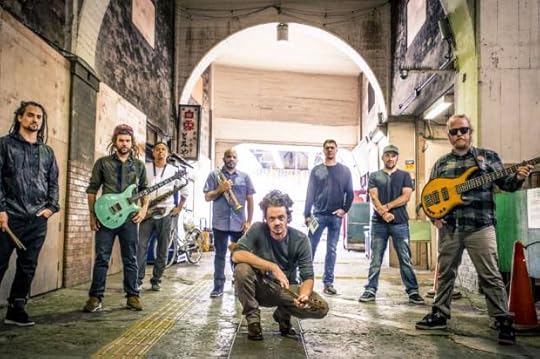
“We decided even though we’ve been a political band our whole lives, this record, we were going to do the opposite of what everyone’s doing, and we were going to focus on love and compassion,” Soja’s lead singer Jacob Hemphill said on “Salon Stage.”
Soja’s forthcoming album “Poetry in Motion,” releases Friday. The band members are also celebrating 20 years of making music together. The genre-bending D.C. band formed while its players were in middle school and are now a two time Grammy-nominated powerhouse.
Hemphill, along with guitarist Trevor Young, and keyboardist Patrick O’Shea performed their lead single “Bad News,” from their new album for an exclusive “Salon Stage” session.
While Soja has shifted their focus away from current events, “Bad News” is the only explicitly political song on the album. With the lines: “And this country is two pieces and it’s evident/ The lowest common denominator is President,” it deals closely with the country’s division that has defined President Donald Trump’s tenure.
Although Soja’s identity has been tied to its attention to politics, it has become popular for artists to address the political climate, which is why “we’re pulling back from the politics,” he said. “There’s only one way that our society can move forward and that’s if we try to understood each other, because for all the differences we have, there are way more similarities.”
Watch the full “Salon Stage” performance on Facebook.
Tune into Salon’s live shows, “Salon Talks” and “Salon Stage,” daily at noon ET / 9 a.m. PT and 4 p.m. ET / 1 p.m. PT, streaming live on Salon and on Facebook.
How to fight back against “power pervs”
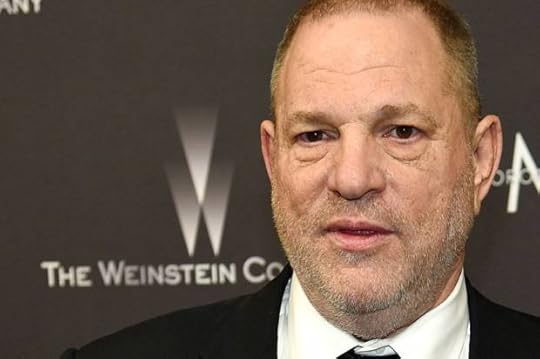
Harvey Weinstein (Credit: AP/Chris Pizzello)
Bill Cosby. Roger Ailes. Bill O’Reilly. And now, Harvey Weinstein. And there’s a good chance by the time this post goes live, hundreds of women will have come forward with allegations that more men in powerful positions are sexual predators.
Women have had to endure the unwanted sexual advances and twisted power plays of insecure, narcissistic men since the dawn of time, and we’ve mostly stayed silent, grinned and bore it or only discussed it among ourselves. But over the past 12 months, it has felt like a new conversation is starting to happen, hasn’t it?
Fifty-nine women broke the ice with their stories about Bill Cosby, including allegations of rape, drugging and sexual assault. Yet their words weren’t enough to convince a jury. After all, it was their words against the word of America’s Dad.
Then former Fox News host Gretchen Carlson came forward to expose Fox News CEO and Trump campaign adviser Roger Ailes. At least he got fired. But it was only after Fox smeared Carlson, and only after an additional 25 women backed up Carlson’s claims.
Really? Twenty-five accusers had to say “this man abused his power in the worst possible way” for his company to take any action? Wouldn’t, I don’t know, one have been enough for them to at least have looked into it?
And they not only got away with it for decades, but they somehow convinced people that the women are the bad guys.
Then there was Donald Trump. Remember when, as a presidential candidate, we heard him proudly brag, “when you’re famous, they let you do it, you can do anything.” We know how that turned out.
Earlier this year, at least five women came forward to say Bill O’Reilly sexually harassed them, and he paid millions upon millions to buy his accusers’ silence. Didn’t work. They still spoke out. He and Fox “parted ways.” People not only continue to defend him, they put him at the top of The New York Times Bestseller list.
Four men who have been accused of abusing women, the extent of which included but was not limited to drugging, raping, coercing them under threat into performing sexual favors, masturbating at them, verbally abusing them and denying them promotions when they refused to comply with sexual demands, among other allegations.
And now we have Harvey Weinstein. We can’t even begin to count how many more women may come forward alleging he harassed or abused them — the news cycle is too fresh and new women are coming forward every day. But Weinstein may have Cosby, Ailes and O’Reilly beat.
How many women have to speak out before all of this stops?
And how can we keep the momentum of this conversation going so this moment, this one, right now, is the turning point when the world says ENOUGH?
I needed to get some perspective on this, so I invited sexual consent and internet abuse lawyer Carrie Goldberg to talk with me on my podcast “Inflection Point,” about what it might take to stop this for good.
Listen to our conversation on the Weinstein case, the complicity of Hollywood in protecting and enabling these, as she calls them, “power pervs,” and how we can fight back.
With “I Love You, America” and “The Rundown,” two women join the comedy talk show fray

"The Rundown;" "I Love You, America" (Credit: BET/Hulu)
Johnny Carson’s tenure as host of “The Tonight Show” marks the last time American audiences united around a single late-night talk series. The late entertainer stands as a legend among late night hosts but the major reason for his reign is that he had no competition. Joan Rivers, Carson’s designated guest host for three years, attempted to launch her own talker at Fox, but that quickly crashed and burned. A deeply insulted Carson instituted a ban on Rivers that lasted past his 1992 retirement, through the tenure of two his successors Jay Leno and Conan O’Brien.
Many more male hosts staked out territory in late night after Carson — David Letterman, most significantly, then Jimmy Kimmel, Jon Stewart, Jimmy Fallon, Bill Maher and Stephen Colbert among them. And in a real sense, the Carson ban on Rivers impacted all female comedians with late night aspirations. Whoopi Goldberg hosted a late-night talk show from 1992 to 1993, but that aired in syndication. Wanda Sykes scored a short-lived Saturday night show on Fox, but that didn’t happen until in 2009, the same year Mo’Nique scored a deal for her own BET talker.
Cut to 2017: Enter Robin Thede and Sarah Silverman.
Thede, who previously served as head writer and a correspondent for Comedy Central’s gone-too-soon “The Nightly Show with Larry Wilmore,” hosts BET’s recently launched late night talker “The Rundown with Robin Thede,” airing at 11 p.m. on Thursday. Silverman’s Hulu series “I Love You, America,” which also debuts new episodes on Thursdays, isn’t a night-time talker per se, though it follows that format to the letter.
In launching their latenight series both performers are bucking the presumed trend for women in comedy, whose best chance for helming a talk show tends to be in a daytime deals. Mind you, that’s has worked out fine for the likes of Ellen DeGeneres and “The Talk” co-host Aisha Tyler.
Post-prime-time, however, the gender omission has been noticeable. Even when former “Daily Show” Samantha Bee launched her own show on TBS in February 2016, Vanity Fair left her out of a 2015 photo shoot that alleged to have featured “all the titans of late-night television.”
Bee and her writing staff have since gone on to win an Emmy for the “Not the White House Correspondents’ Dinner,” as well as score several more nominations and enjoy heaps of critical praise. In success, Bee has opened the door to more women. But she’s also underscored that a timid approach simply won’t cut it in this territory.
Silverman acknowledges that with an ongoing gag in the form of her sort-sidekick Mather Zickel, always hovering nearby. Zickel, who goes by Mather in the show, is “just your average, run of the mill late night talk show host” Silverman explains to viewers, the un-offensive ur-host archetype the camera cuts to when Silverman gets the sense that the viewers may be getting too uncomfortable, an idea she tests by having the camera linger on naked guests in the audience, specifically close-up shots of their genitalia.
Thede’s approach is much more familiar, a hybrid of the desk-free comedy news show and a pointed sketch series resembling “Chappelle’s Show.” There are pre-taped sketches, with the first two mining comedy from viewing the black experience in white spaces. For example, in the second episode Thede is the only black woman in a spinning class where the instructor invites participants to empower themselves by singing along to a ditty that includes the n-word. To her horror, everyone does.
The viewpoint of “The Rundown” purports to accommodates a black perspective, which it does insofar as Thede spends more time riffing on topics that are most relevant to people of color. But that means just about every top headline these days qualifies as ripe for Thede to pick, enabling her to cover a lot of ground quickly without belaboring the point. The assumption is that the audience knows the heart of the story because it lives with their various stakes in every moment. Adding to its upbeat pacing is a vertical headline scroller “The Rundown” employs in the style of other news series, informing viewers which topics are in the barrel.
Thede’s humor absolutely has teeth, though with less of the aggravated snarl of her fellow Comedy Central alumni. She cuts deeply into deserving targets, but does so with the sparkle and grin of some that’s fully aware that everything is a part of the larger cosmic joke she and her viewers have been born into. She lands a punchline referring to the jeweled sword Gucci Mane used to cut his wedding cake with blasé confidence, and utters the words “President” and “Trump” with the casual disdain of someone who might as well refer to him as “that fool.” Neither need explaining, and in the case of one of those figures, “The Rundown” probably is the only late-night talk show where he’d even be in the mix.
Respect is reserved for the oppressed under the headlines and the fatigued people in an audience she strives to uplift by keeping her delivery style puckish and light. And in case that’s not enough, she employs “pop-up concert” segments, with the first week surprising customers (or extras) in a bodega with a performance by Duckwrth.
As a whole, Thede’s approach ensures that “The Rundown” refrains from being exclusive and, indeed, welcomes all members of the huddled masses yearning to breathe a little more freely. And she does it in a means that’s feels fresh and necessary.
“I Love You, America” doesn’t quite achieve that level of vitality in part because Silverman is striving greatly to be safe, nudity notwithstanding. She has a steeper hill to climb due to her platform: No streaming talk series has taken off. Perhaps Chelsea Handler’s recently ending her Netflix talk show is a tacit acknowledgment of this, but the larger challenge is in the format’s value as a filter for current events. Even weekly shows display awareness of this by digging deeply into top-of-mind issues while speaking to the hot-button happening of the last seven days.
“I Love You, America” feels like it could have been done at any time by anybody. Silverman merely happens to be famous target of the right for being an outspoken liberal as well as a proud purveyor of dirty humor. She’s also established herself as an acquired taste among many people, putting her in a different position than Thede from the outset.
In her Hulu series, Silverman’s goal is to “find common ground,” which she does by traveling to small towns dominated by Trump voters. The series debut takes her to a working-class suburb of New Orleans to speak with a family whose matriarch opines that Barack Obama “took what it means to be an American out of America,” implying that Obama made handouts the new normal.
Barely an inhale and exhale later, Silverman finds out that the entire family benefits from government subsidized healthcare – even the head of household, a full-time student.
Episode 2 travels to Texas, where Silverman chats with Trump voters who are immediately on the defensive, until she asks them to tell a story about a time they defecated in their pants. Turns out everyone has one! And everybody laughs, because everybody poops.
Silverman explains in her series debut that sometimes “I Love You, America” will be aggressively fun and silly and sometimes it’ll be totally earnest. “Manage your expectations,” she urges the audience. But shouldn’t we have minimum expectations that the show can minimally fulfill its implied mandate by inspiring viewers to truly find common ground beyond a shared affection for scatological humor.
It is early days for both shows, in a landscape that has many, many late night talk shows (or talk shows resembling nighttime talkers) vying for viewership. This is an indication of need, especially these days, to process the unthinkable through satire and humor if only to keep us from going crazy. “I Love You, America” may settle on this idea as Silverman becomes more assured in her approach to bridge-building. But until that happens it’s good to know that Thede clearly gets it, evident in her sign-off.
“No matter what color you are,” she says, “stay black.”
Trump’s opioid declaration doesn’t include a request for more funding

President Donald Trump declared the opioid crisis to be a “nationwide public health emergency” on Thursday afternoon, but as with much of the president’s rhetoric, it rung hollow for many.
NEW: Pres. Trump officially declares “the opioid crisis a national public health emergency under federal law”
— CBS News (@CBSNews) October 26, 2017
For weeks, the Trump administration has said it would declare the opioid crisis to be a national emergency. But a public health emergency differs in that it has to be renewed every 90 days and “is narrower than what his own opioid commission had recommended,” which doesn’t provide new funds for suffering communities, Politico reported.
The opioid epidemic is now claiming 50,000 lives annually in America, which is 10,000 more lives than the HIV/AIDS epidemic at its height. Drug overdoses, primarily because of the substantial increase in opioid-related overdoses, are now the number one cause of death for Americans under 50 years old.
“Everything that was mentioned today sounds helpful, but mentioning a few helpful items is not a plan,” Andrew Kolodny, MD, co-director of the Opioid Policy Research Collaborative at Brandeis University’s Heller School for Social Policy and Management, told TIME magazine.
Kolodny hoped Trump would announce an appropriation of $60 billion over the next decade. But that never happened, and state and public health experts grew disappointed.
“We are disappointed that [the] President took two months to act after acknowledging the opioid epidemic is one of the most serious public health crisis of a generation, but we are hopeful that today’s declaration is finally a sign of positive momentum,” CEO of the National League of Cities, Clarence Anthony, said in a statement on Thursday. “We have long believed that the increasing number of people addicted to heroin, painkillers and other opioid derivatives has warranted the declaration of a national emergency.”
Instead, Trump suggested there be “really tough, really big, really great advertising so we get to people before they start.” He added, “If we can teach young people not to take drugs . . . it’s really, really easy not to take them.”
So what does the announcement actually do? Well, the president’s declaration “will allow public health agencies to swiftly redirect existing health resources to the crisis, but won’t add fresh funds,” Politico reported. The Department of Health and Human Services (HHS) will also have the option to waive regulations.
It also provides rural-area patients access to telemedicine, which is often used to help treat substance addiction. It also gives “states the freedom to hire more substance abuse counselors and it allows for existing funding for displaced workers and those with HIV/AIDS to be shifted to help the addicted.”
Refilling the HHS public health fund’s bank account — which currently has an estimated $57,000 — has largely been left up to Congress.
Dr. Richard D. Blondell, professor and vice chair for addiction medicine at the University of Buffalo’s Department of Family Medicine called Trump’s speech “probably a good photo-op,” according to TIME. “It’s like a bunch of kids drowning in a river — we need to go upstream and find out why they’re drowning in the first place. We need to do something so that doctors stop prescribing people into addiction.”



